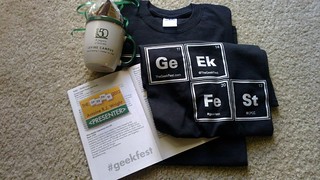Welcome to the second issue of Mobile Ministry Magazine (MMM) simply titled Envisioning. There was a decent response from the year’s first issue and so we are going to continue down the same path with this package of observations and insights from the mobile ministry (#mobmin) space.
Tag Archives: HTML
Geek Fest Presentation
A bit late, but definitely as interactive as it gets from these parts. The presentation from Thursday’s Geek Fest is now viewable by all:
What Mobile Experiences Are Left?
A lot of what we think about mobile has been shaped by the entertainment industry’s imaginations, manufacturer’s designs and marketing, and the wonderment of of friends and family. In light of that, it almost seems like there’s nothing else left for mobile to unveil. I think mobile has a bit left to unveil. This talk will explore what’s happened and what’s to come, and why its not so far away from your fingertips.
A Bit More About this Presentation
There’s a bit more that’s gone into presentations as MMM has evolved. Some years ago, we started experimenting with the idea of taking the focus of the presentation off of the presenter and the projector and putting it into the hands of those attending. A further evolution from there was to reinvent the slide deck along our mobile-first mindset and develop interaction decks which looked and acted betted on mobiles than they would on 100+in screens. This presentation goes a few steps further in terms of the plumbing and connectivity involved.
First, the outline of the presentation was created using Dave Winer’s Fargo.io Outliner. As a starting point for thoughts, as well as a logical means to organize resources, Fargo will continue to be the backbone to presentations – or at least having an output in XML of what’s happening there.
Secondly, we used a lot of video in this presentation. That’s not normal, therefore YouTube was leveraged before their abilities to organize into a playlist the collection of videos, and allow those who produced those videos the space to be heard for their work. I liked how the videos were integrated into the storyline this time around, and will explore in future talks how to leverage some of the same (probably with other video or audio services, just to see what happens).
The slide deck is HTML5-driven. Technically, it uses a feature called AppCache in order to be saved to the viewer’s device/machine, so they can look at it later. Now, if they clear their browser cache, then they will not see the deck. There are linked assets in the deck which need a web connect too (the XML and videos) – and so it will not be completely viewable offline. It is interactive, and displays the points that needed to be conveyed. The UI is purposeful in directing attention – there are few ways to go backwards depending on the screen. Much like the Choose Your Own Adventure books of our past, its designed to let the story unfold as you read, instead of all at once.
If you have comments or questions about the content or tech used in this, please do not hesitate to ask. To view previous presentations and other assets created at MMM, see this page.
In the meanwhile, do take shots… you never know where they might end up.

